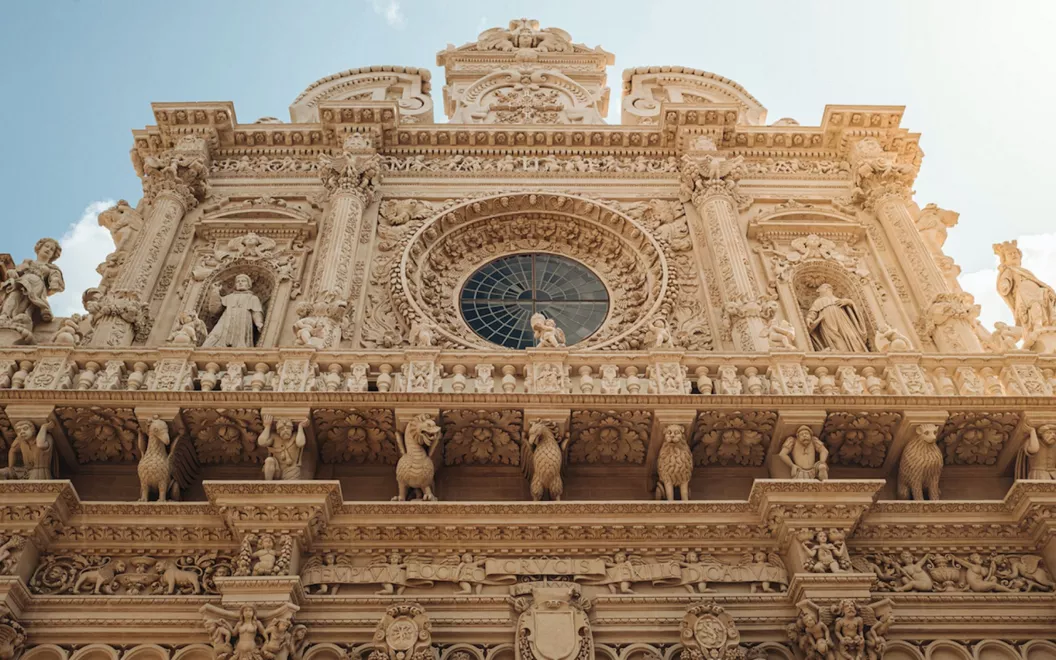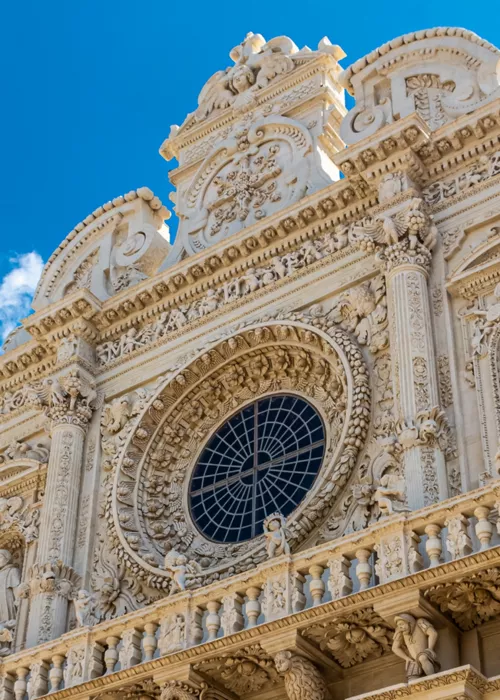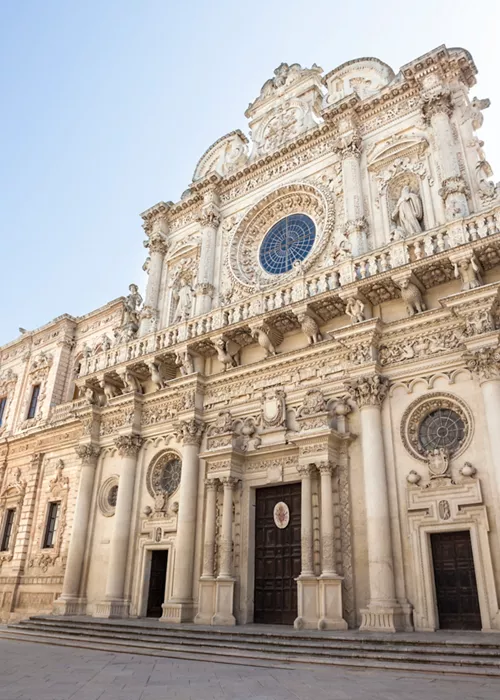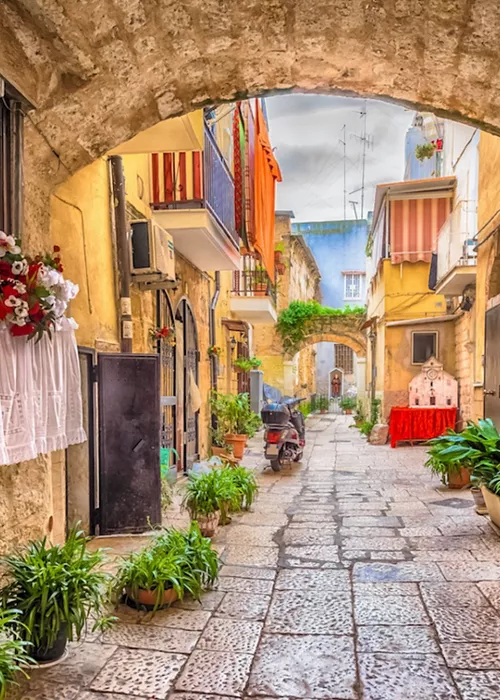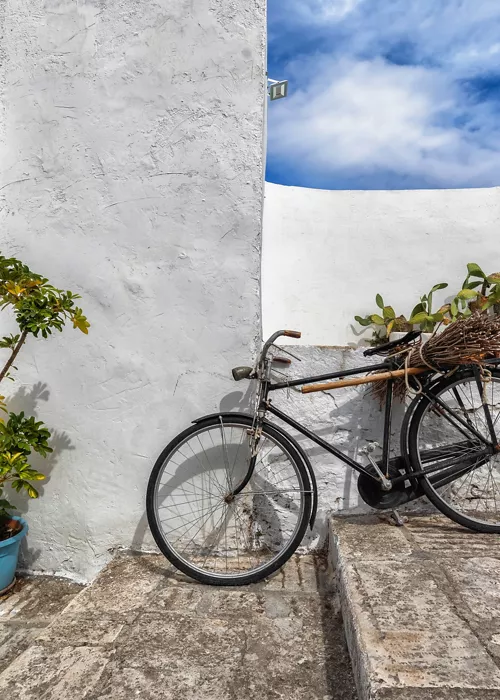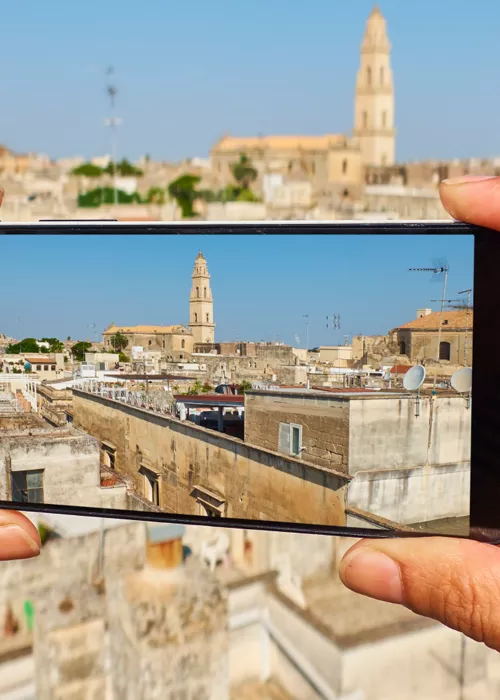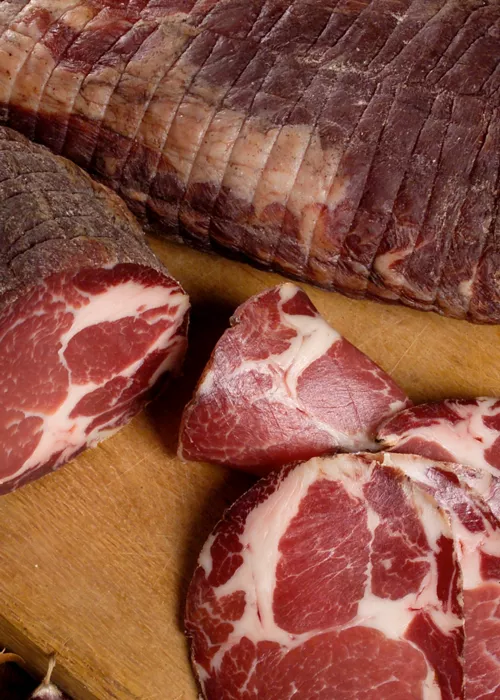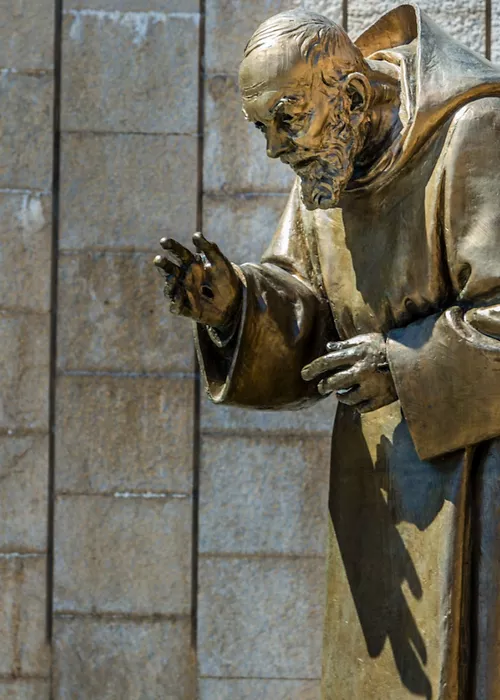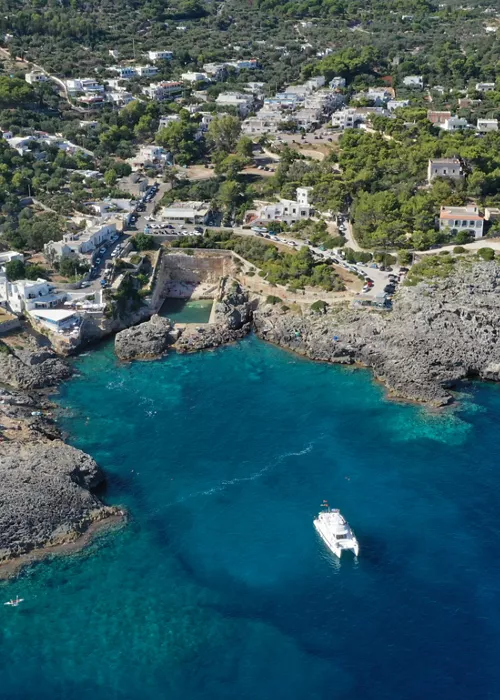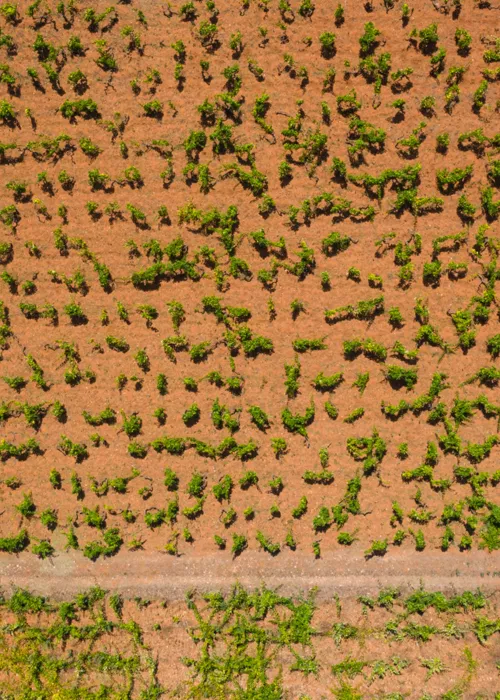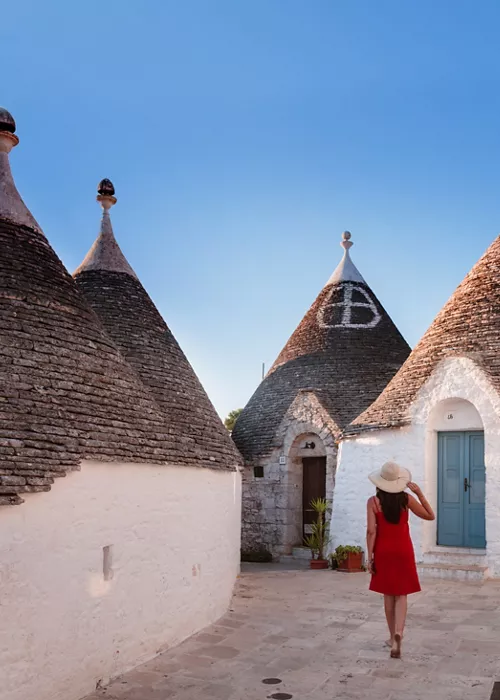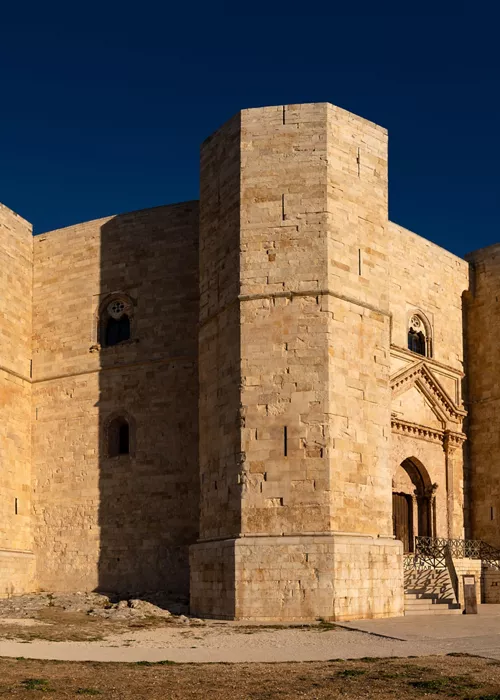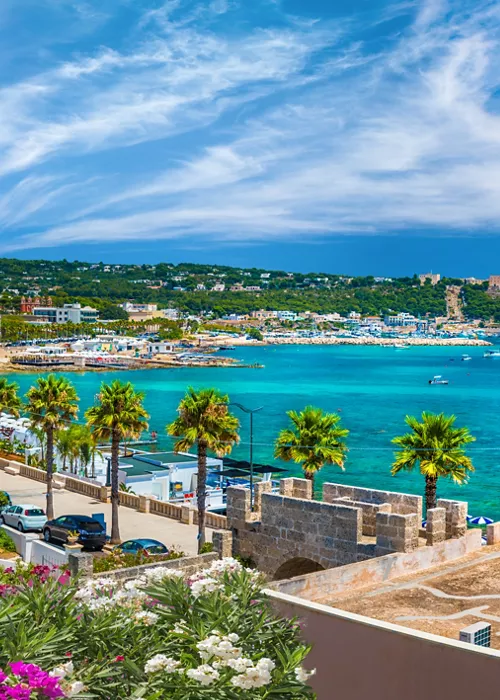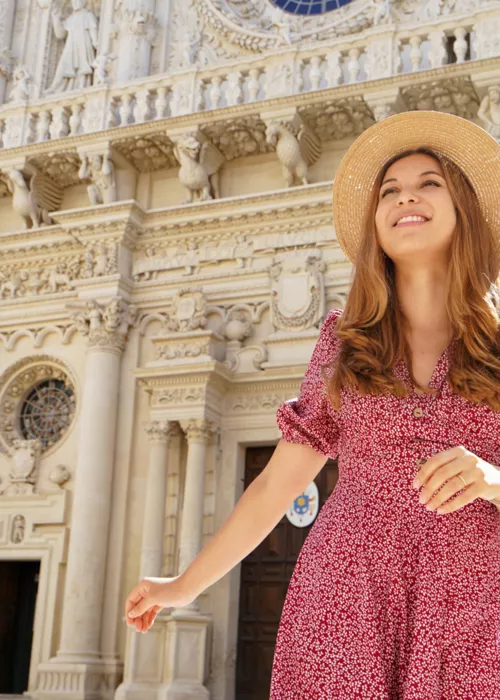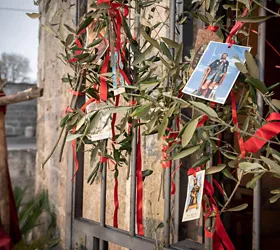Lecce: the beautiful sun-kissed city among the white stones
5 minutes
Distinguished by its columns, arches and numerous rose windows, as well as its typical small squares and unexpected alleyways, it is dotted with marvellous aristocratic palaces and stands out among the most beautiful cities of art in our peninsula.
Known as the "Florence of the South", Lecce amazes, fascinates and conquers with the archaeological remains of Roman rule and the exuberance of 17th-century baroque, known here as "Lecce Baroque", a unique expression of a popular language with Mediterranean roots.
Tourists from all over the world are also won over by the well-known Apulian warmth and superb food and wine tradition.
Lecce is a lively city that offers numerous occasions to enjoy creative events and yearly dates with tradition.
History and interesting facts about Lecce
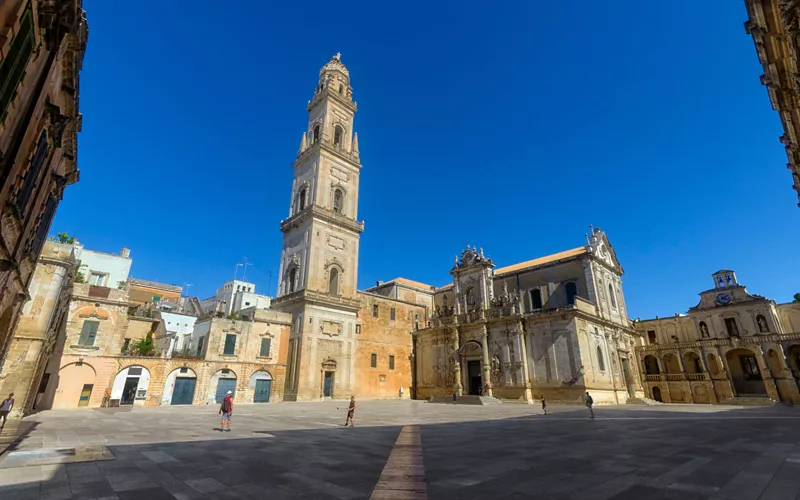
The history of Lecce is intriguing. Its origins seem to date back to the 5th century BC, but a legend attributes its foundation to around 1200 BC by Malennio, immediately after the destruction of the city of Troy. The conquest by Rome ensured a strong economic and building development.
With the fall of the empire under Marcus Aurelius, Lecce suffered a slow decline. The arrival of the Normans in southern Italy lifted the fortunes of the city, which became a county and later the capital of Salento. Under the rule of the Kingdom of Naples since 1463, Lecce grew in importance until it became a lively cultural centre that developed trade with merchants from all over the world.
The following two centuries saw all of Salento threatened on several occasions by Turkish incursions and Saracen invasions in southern Italy, so much so that, under the reign of Charles V, the city was provided with a new city wall and a castle. It was with Charles V that the era began that made Lecce one of the most important Baroque cities and experienced a true Salento Renaissance.
After the Unification of Italy, many public works made it even more distinctive, with an initial expansion outside the walls and the creation of new neighbourhoods in neoclassical, neo-Moorish and neo-Gothic styles.
What to see in Lecce: places not to be missed
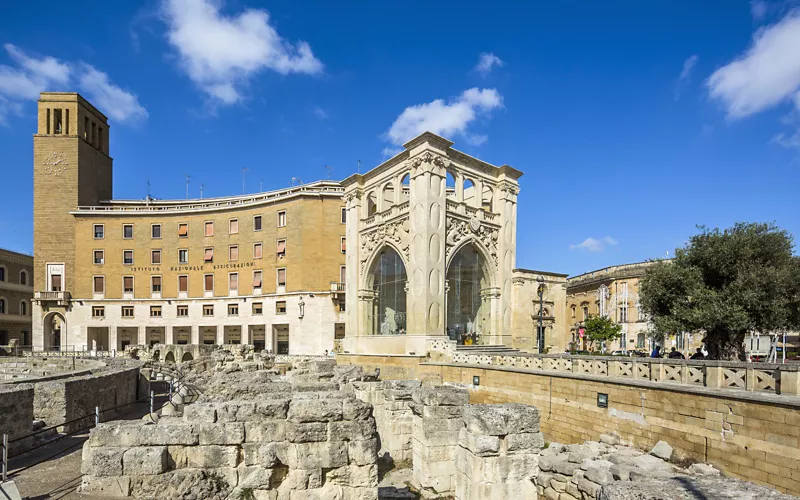
Rich in works of art from the Roman, Medieval and Renaissance periods, but world-famous for its Baroque style interpreted in a very particular and specific way, it is a city full of attractions. What to see in Lecce? This is a mini-guide to the most popular places to visit:
- A tour of the city must start at the Lecce Cathedral. With its square that is a veritable open-air museum, the Cathedral of Our Lady of the Assumption is characterised by a bell tower and two facades, one very sober, the other richly decorated.
- We then move on tothe Piazza di Sant'Oronzo in Lecce named after the city's patron saint. Here you will be confronted with a masterpiece of historical evidence telling of its different eras.
- Not to be missed, then: Porta Napoli, a triumphant arch gateway that leads directly to the city's historic centre, and the Basilica di Santa Croce in Lecce, the most significant example of Lecce Baroque with facade decorations so sumptuous that they will leave you speechless.
The historical centre of Lecce, covered with portals, churches, spires, monuments and houses in full Lecce Baroque style to admire, makes it worth a stroll. When the sun goes down, particularly if you arrive in Lecce in the summer, is the best time; you will be greeted by a milder temperature and a light that sets the monuments ablaze, which will delight you like none other.
Other points of interest that shouldn’t be missed, steeped in history and beauty beyond imagination, include the Roman Amphitheatre, Porta Rudiae, the Castle of Charles V and the Abbey of Santa Maria di Cerrate.
4 ideas on what to do in Lecce
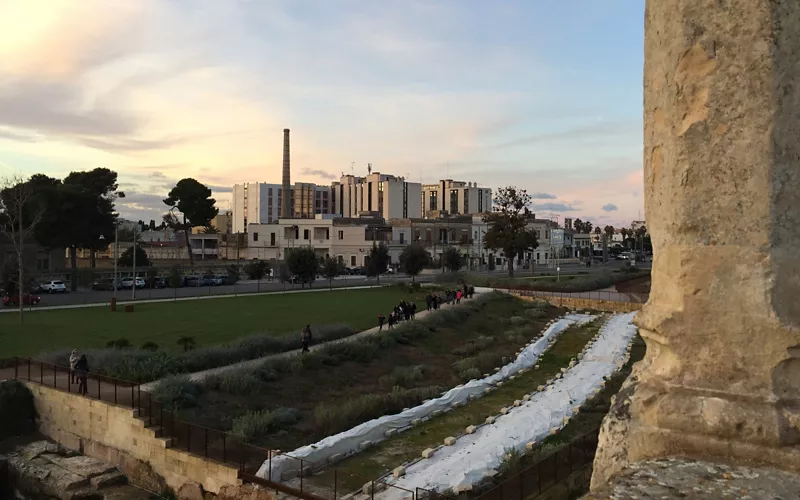
The sea in Lecce is and remains a wonderful pastime with some of the most beautiful beaches in Italy scattered along the wide coastal area. A holiday around the city will therefore combine relaxation and culture like few other destinations in Italy.
Losing yourself in history is very easy at the Museum of Sigismondo Castromediano, the oldest archaeological museum in Apulia, which also has a small picture gallery and a lapidary, with remains of the Messapian civilisation and Roman settlements.
A visit to the Mura Urbiche of Lecce is obviously a must: built by Charles V to curb Turkish incursions, an important testimony of 16th century fortification. Finally, the Lecce-style coffee experience is recommended for a wake-up call full of flavour and energy: the coffee, espresso or mocha, is accompanied by ice and almond milk.
What to eat in Lecce: 8 specialities
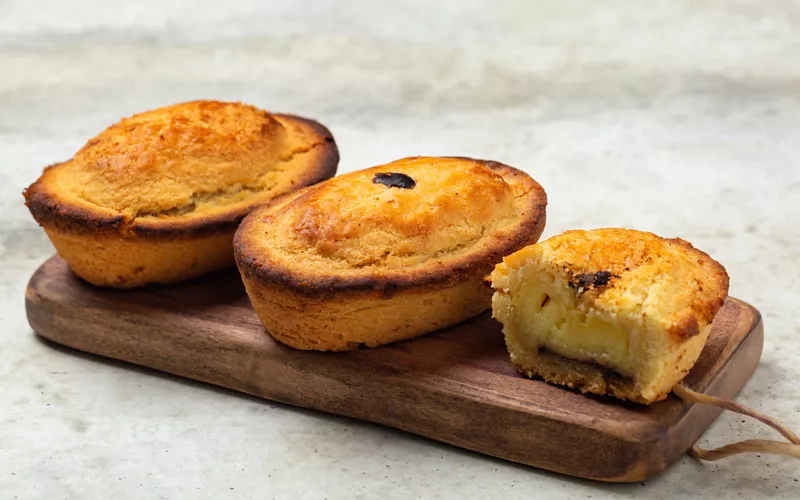
Rich, Mediterranean and tasty: the cuisine of Lecce has an ancient tradition. What to eat in Lecce? There are many popular dishes, and it is great to taste them in the many restaurants in the city centre, while trying to learn the secrets of traditional Lecce recipes.
- Let's start with the first courses where orecchiette al sugo is the star, of course. Ciceri e tria, a special diamond-shaped cut of pasta, partly boiled and partly fried, flavoured with chickpeas, is a worthy alternative, and don't forget to try sagne 'ncannulate, twisted noodles topped with tomato sauce, ricotta cheese and fresh basil leaves. Finally, the very tasty rustico leccese, consisting of two puff-pastry discs filled with béchamel sauce, tomato pulp, fior di latte mozzarella and pepper;
- If the sea for you means fish, you must try scapece, an oily fish, usually curled picarel, fried and seasoned with EVO oil, breadcrumbs, saffron, vinegar and other spices;
- Among the desserts, the pasticciotto leccese, a much-loved shortcrust pastry filled with custard. Also worth mentioning is the fruttone, short pastry filled with jam and fresh almond paste, with a top layer of dark chocolate.
The unusual places in Lecce
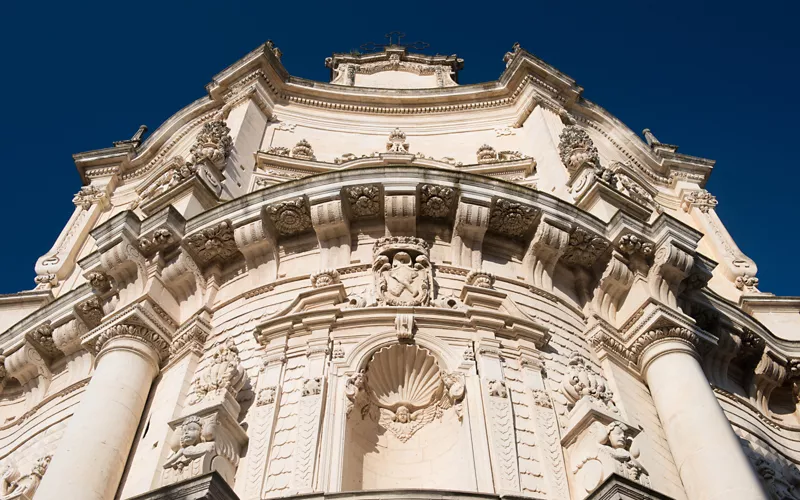
Avoiding the classic tourist spots to discover another side of the city's soul is possible.
Beautiful and off the beaten track, the Church of San Matteo is a Baroque Catholic place of worship with a distinctive facade: a concave and smooth upper part, a convex lower part decorated with scales and ashlars.
Vico del Theutra will astound the most curious: in Lecce's historical centre, at the corner with Via Federico D'Aragona, you can see a small woman's face carved on the building between the two streets. Commissioned by a boy who had lost his beloved, it tells of a poignant love.

